Taxidermy4Cash.com
Taxidermy and the effort involved in creating a case.
We are always very interested in Purchasing Victorian Taxidermy, please respond via this on-line form of what you have for sale. HERE
We get asked to recommend Bird Taxidermists in the UK and America. This taxidermist produces modern creations utlising many of the design features and case building techniques created by the Victorian Taxidermists. This taxidermy art form has changed little over the years. Preservation techniques in terms of the use of chemicals has changed and groundwork has become more realistic. Apart from that the taxidermy techniques used 150 years ago are still relevant today.
We have always been interested in creating dioramas, with nest eggs and chicks and to also closely match the birds that associate together and also near as possible the habitat in which they would be likely to be found.
The case that is outlined below demonstrates the stages involved the choice of landscape, colours, materials and of course the choice of mounts. The ducks are two Scaup ducks North American but also all infrequent visitors to the UK.
The taxidermy has been undertaken by a world class taxidermist, with birds that have been legally obtained. The styrafoam rockwork to 15-20 coats of paint to create both texture and depth. The resin required 6-10 applications for the same reason, allowing each application to dry prior to the next coat. Each stone is hand painted and then varnished to create a wet look. The birds, well taxidermists will know what they take to create, then of course there is the cabinet work and galzing. Clearly some people spend more time on cases and mounts than others.
The concept
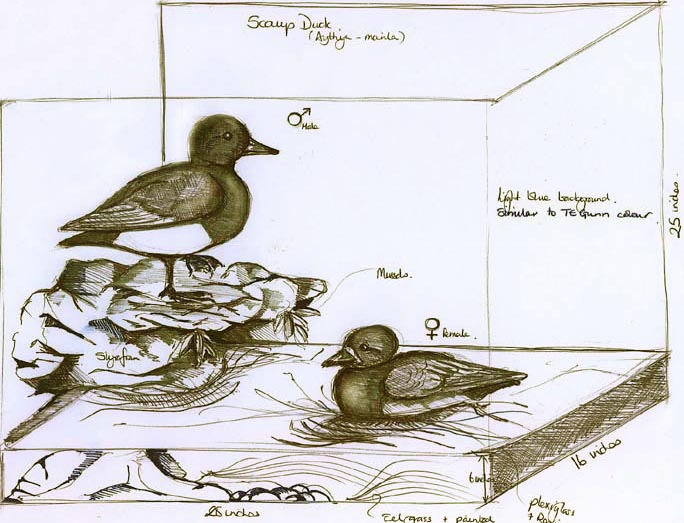
Scaup ducks. First we started with the above image and decided that the placement of the birds looked authentic. That said it may change and perhaps over the course of the case development it will change. These cases are not thrown together like some do. Oh and never for sale. Too many hours go into the cases to make them affordable by most. This case shall be paired with the Harlequin ducks that have already been created. Once the Scaup case is done Burrows Goldeneye or North Atlantic Eiders will be next. It was finally decided that the drake would sit on the rock and not stand and that the position of the hen would remain the same.
![Ringed-neck-Ducks[1].JPG](Ringed-neck-Ducks[1].JPG)
Scaup ducks. One of the many refernce images used for the birds.These cases are not thrown together like some do. Oh and never for sale. Too many hours go into the cases to make them affordable by most. This case shall be paired with the Harlequin ducks that have already been created. Once the Scaup case is done Burrows Goldeneye or North Atlantic Eiders will be next.
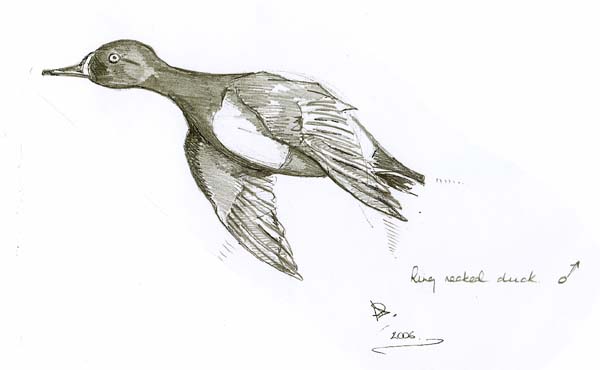
Ring necked duck in flight. One of the many refernce images used for the birds.These cases are not thrown together like some do. Oh and never for sale. Too many hours go into the cases to make them affordable by most.
The Finished Case
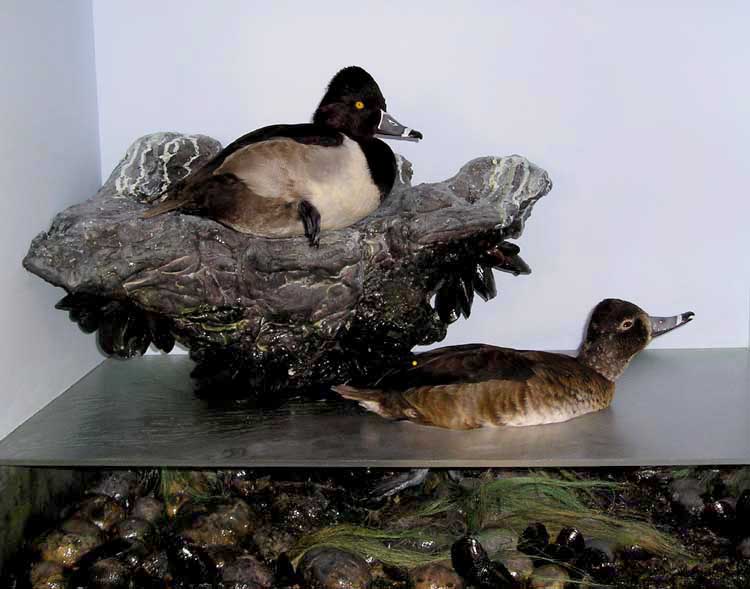
Scaup ducks. First we started with the drawn image and decided that the placement of the birds looked authentic. These cases are not thrown together like some do. Oh and never for sale. Too many hours go into the cases to make them affordable by most. This case shall be paired with the Harlequin ducks that have already been created. Once the Scaup case is done Burrows Goldeneye or North Atlantic Eiders will be next. It was finally decided that the drake would sit on the rock and not stand and that the position of the hen would remain the same.
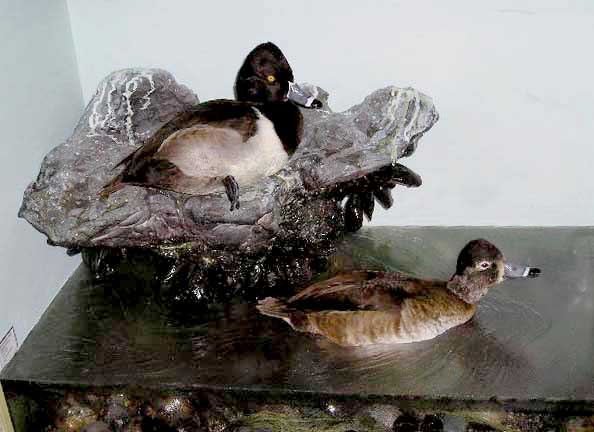
Scaup ducks. First we started with the drawn image and decided that the placement of the birds looked authentic.

Scaup ducks. First we started with the drawn image and decided that the placement of the birds looked authentic.
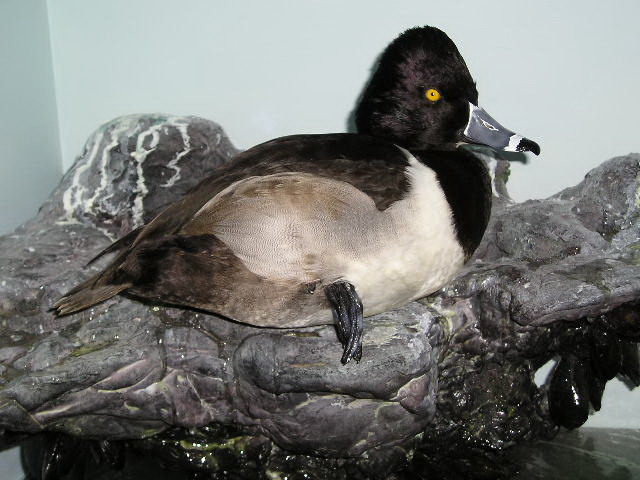
Scaup ducks. First we started with the drawn image and decided that the placement of the birds looked authentic.
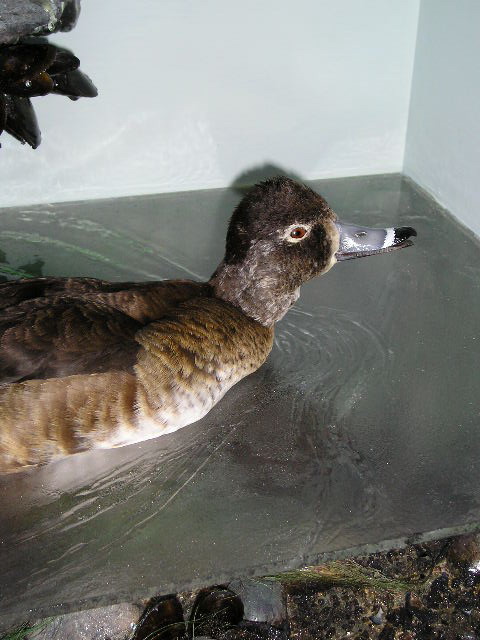
Scaup ducks. First we started with the drawn image and decided that the placement of the birds looked authentic.
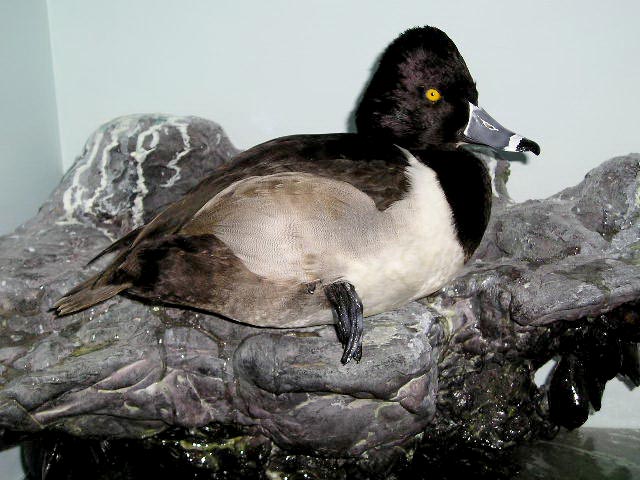
Scaup ducks. First we started with the drawn image and decided that the placement of the birds looked authentic.
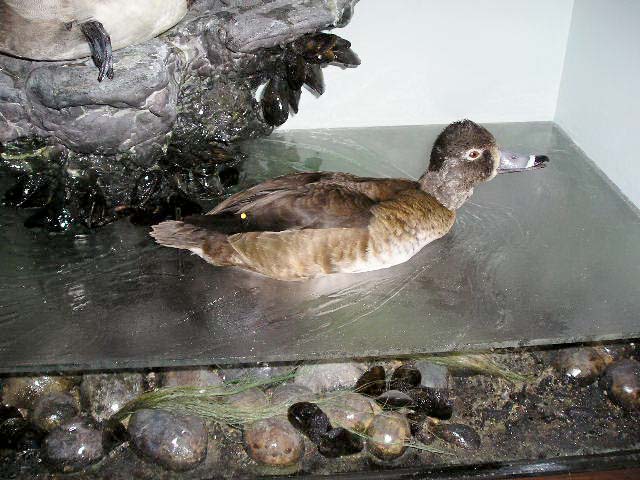
Scaup ducks. First we started with the drawn image and decided that the placement of the birds looked authentic.
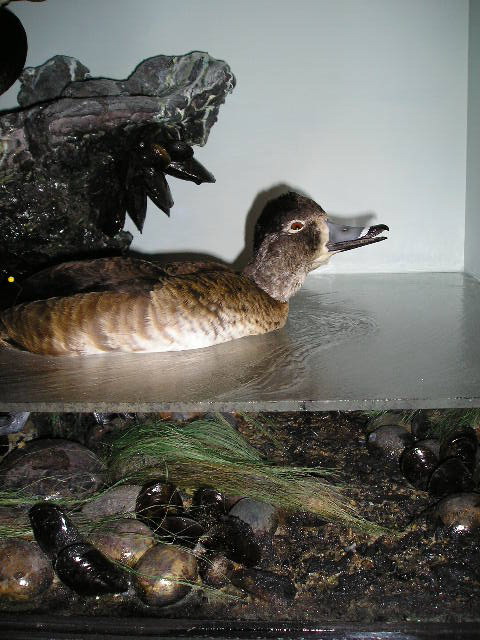
Scaup ducks. First we started with the drawn image and decided that the placement of the birds looked authentic.
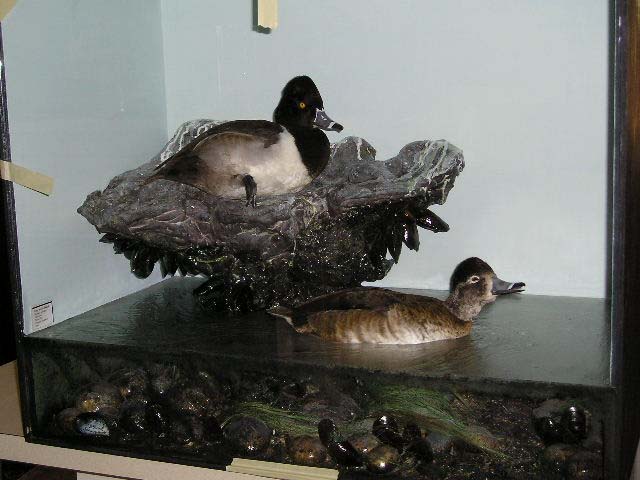
Scaup ducks. First we started with the drawn image and decided that the placement of the birds looked authentic.
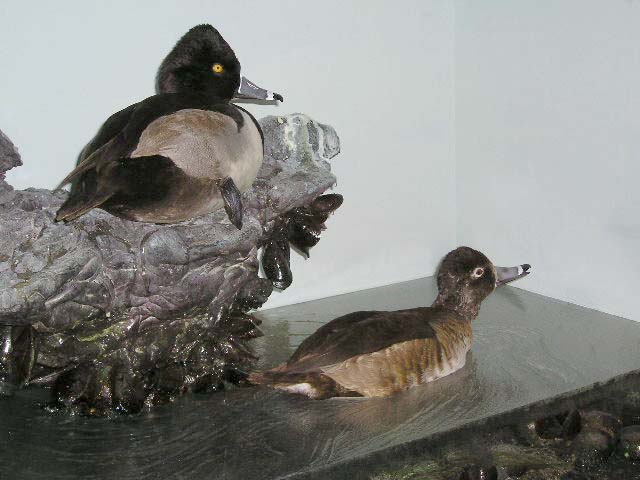
Scaup ducks. First we started with the drawn image and decided that the placement of the birds looked authentic.
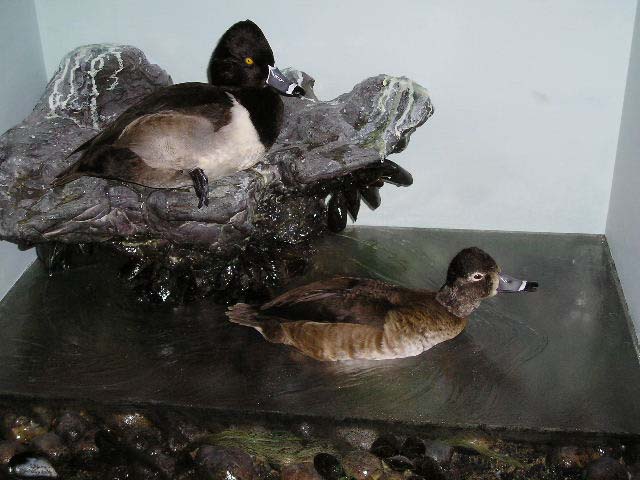
Scaup ducks. First we started with the drawn image and decided that the placement of the birds looked authentic.
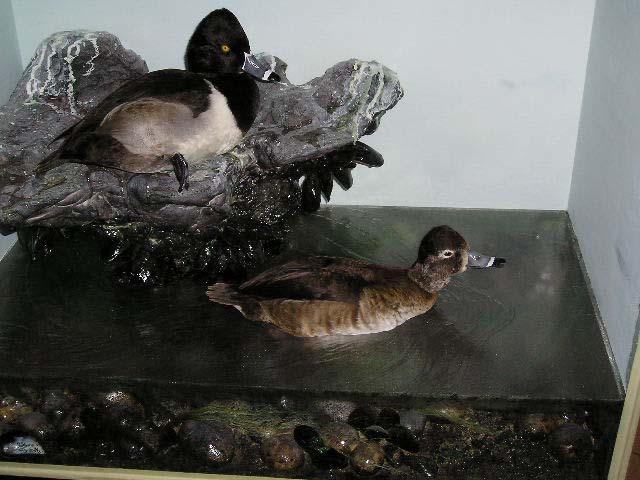
Scaup ducks. First we started with the drawn image and decided that the placement of the birds looked authentic.
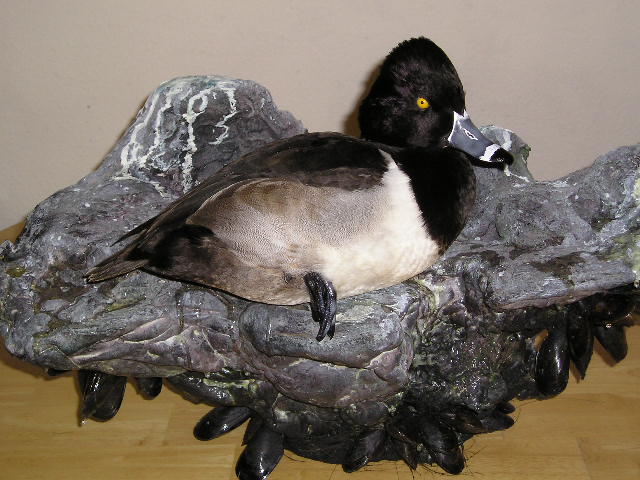
Scaup ducks. First we started with the drawn image and decided that the placement of the birds looked authentic.
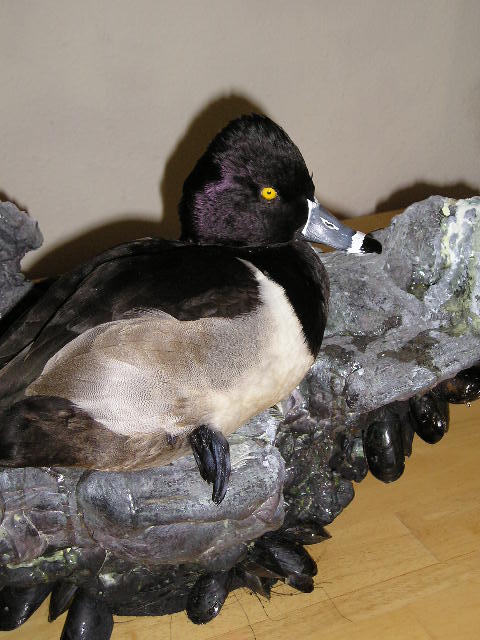
Scaup ducks. First we started with the drawn image and decided that the placement of the birds looked authentic.
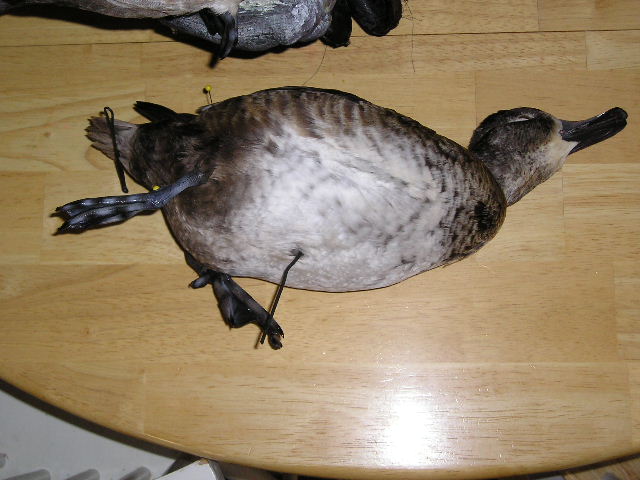
Scaup ducks. First we started with the drawn image and decided that the placement of the birds looked authentic.
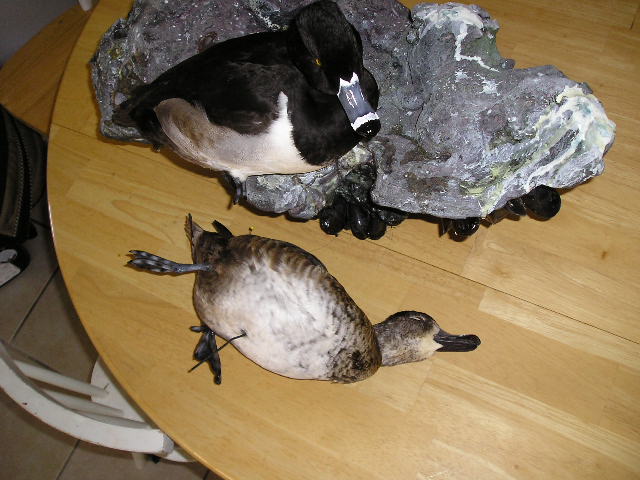
Scaup ducks. First we started with the drawn image and decided that the placement of the birds looked authentic.
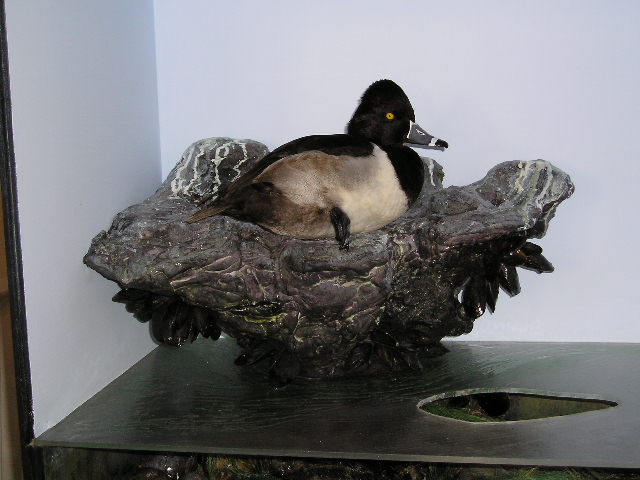
Scaup ducks. First we started with the drawn image and decided that the placement of the birds looked authentic.
The Scaup Duck / Ring Billed Duck
The Scaup Duck seems to float less lightly than it really does, its body being comparatively flat. It moves fast, frequently sipping the water, as if to ascertain whether its favourite food be in it. Then turning its head and glancing on either side to assure itself of security, down it dives with all the agility of a Merganser, and remains a considerable time below. On emerging, it shakes its head, raises the hind part of its body, opens its short and rather curved wings, after a few flaps replaces them, and again dives in search of food. Should any person appear when it emerges, it swims off to a considerable distance, watches every movement of the intruder, and finally either returns to its former place, or flies away.
These birds are fond of large eddies below projecting points of land, but frequently dive in search of food at a considerable distance from them. When in eddies they may be approached and shot with less difficulty than when in any other situation. If wounded only, they are not easily secured; in fact, you need not go after them, for by diving, fluttering along the surface, and cutting backward and forward, they generally elude pursuit. Between Louisville and Shippingport, on the Kentucky side of the Ohio, the shores are from ten to fifteen feet high, and rather abrupt when the waters are at their ordinary level. The Scaup Ducks are fond of diving for food along this place, and there, by coming directly upon them unseen, till you are almost over them, you may have the very best opportunities of procuring them. They are not worth shooting, however, unless for sport or examination, for their flesh is generally tough and rather fishy in flavour. Indeed I know none, excepting what is called an Epicure, who could relish a Scaup Duck.
They appear to experience some difficulty in getting on wing, and assist themselves on all occasions, either by meeting the current or fronting the wind, while they also use their broad feet as helps. When danger is near, they frequently, however, prefer diving, which they find as effectual a means of security as flying. As they usually feed at some distance from each other, it is amusing to see them go off, as they emerge from the water in succession, and to watch them when they collect again, and when, after flying for a long time in circles, now high then low over the water, they all realight. These habits, and the toughness of their sinewy bodies, render it rather difficult to shoot them. Although flat-billed, they dive to a considerable depth, and when they have reached the bottom, no doubt furrow the mud, in the manner of the Shoveller (Anas clypeata), although the latter performs this action while floating, on the surface, with its head and neck alone submersed, as it swims over the shallows.
The food of the Scaup Duck I have found to consist of small fry, crayfishes, and a mixture of such grasses as here and there grow along the beds of our rivers. I never found any portions of testaceous mollusca in the gizzards of those obtained on our western waters, although even there they might meet with abundance of these animals.
When these birds are travelling, their flight is steady, rather laborious, but greatly protracted. The whistling of their wings is heard at a considerable distance when they are passing over head. At this time they usually move in a broad front, sometimes in a continuous line. When disturbed, they fly straight forward for awhile, with less velocity than when travelling, and, if within proper distance, are easily shot. At times their notes are shrill, but at others hoarse and guttural. They are, however, rarely heard during the day, and indeed, like many other species, these birds are partly nocturnal.
At the approach of spring the Drakes pay their addresses to the females, before they set out on their journey. At that period the males become more active and lively, bowing their heads, opening their broad bills, and uttering a kind of quack, which to the listener seems produced by wind in their stomach, but notwithstanding, appears to delight their chosen females.
The case in stages
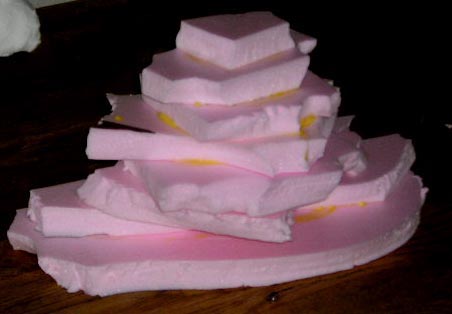
Styrafoam glued to form the basic shape and then plaster of paris is applied
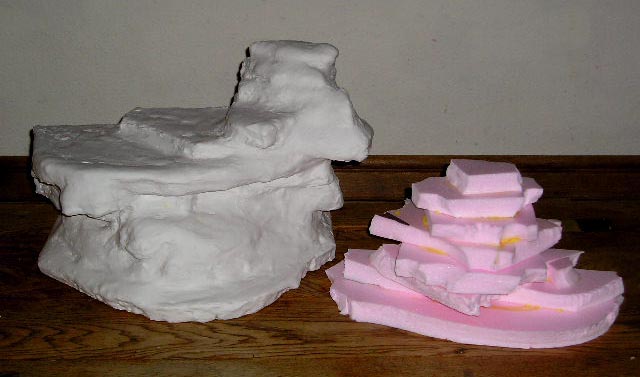
Styrafoam glued to form the basic shape and then plaster of paris is applied
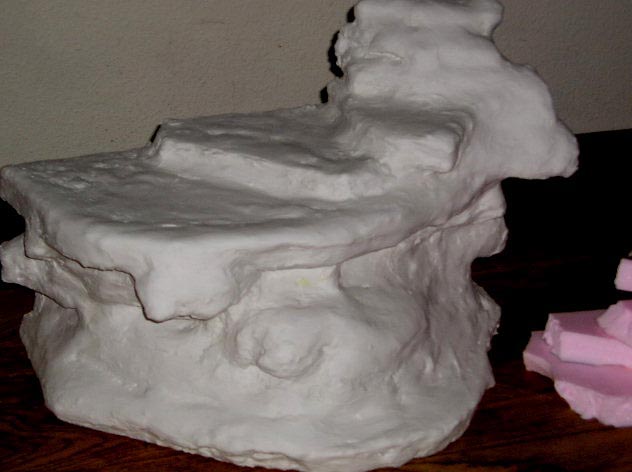
Styrafoam glued to form the basic shape and then plaster of paris is applied
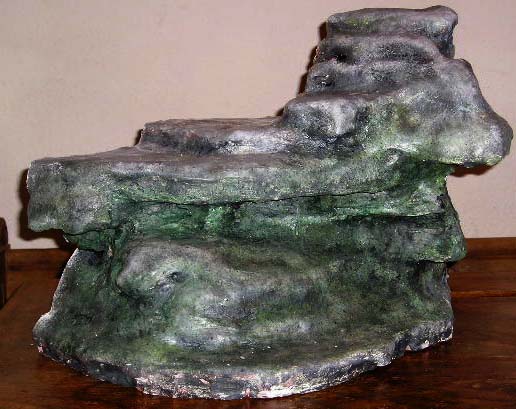
Here is an example of attention to detail
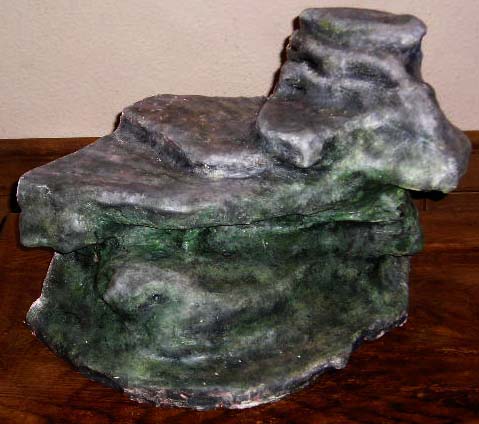
Here is an example of attention to detail. What do you think????? Hey our "fans" have no need to answer as we are always ahead of you, especially at the auctions!!. Shit is our response to this rock. That said some 6-8 hours went into the hand painting each layer of different colour, highlights and low-lights went into this rock and it still turned into a pile of crap. Only thing for it, toss into the bin and start again. Some do not even spend that much time on an entire case yet alone one rock. Oh well back to the drawing board.
Let's start again, and we have not even done the ducks yet. We aim to create a complete set of cases that will include, Eiders, Burrows Goldeneye, Scoters and Pochards. When complete is should be an impressive set snd one of a kind. 6 cases in total along a similar theme of Estuarine Waterfowl.
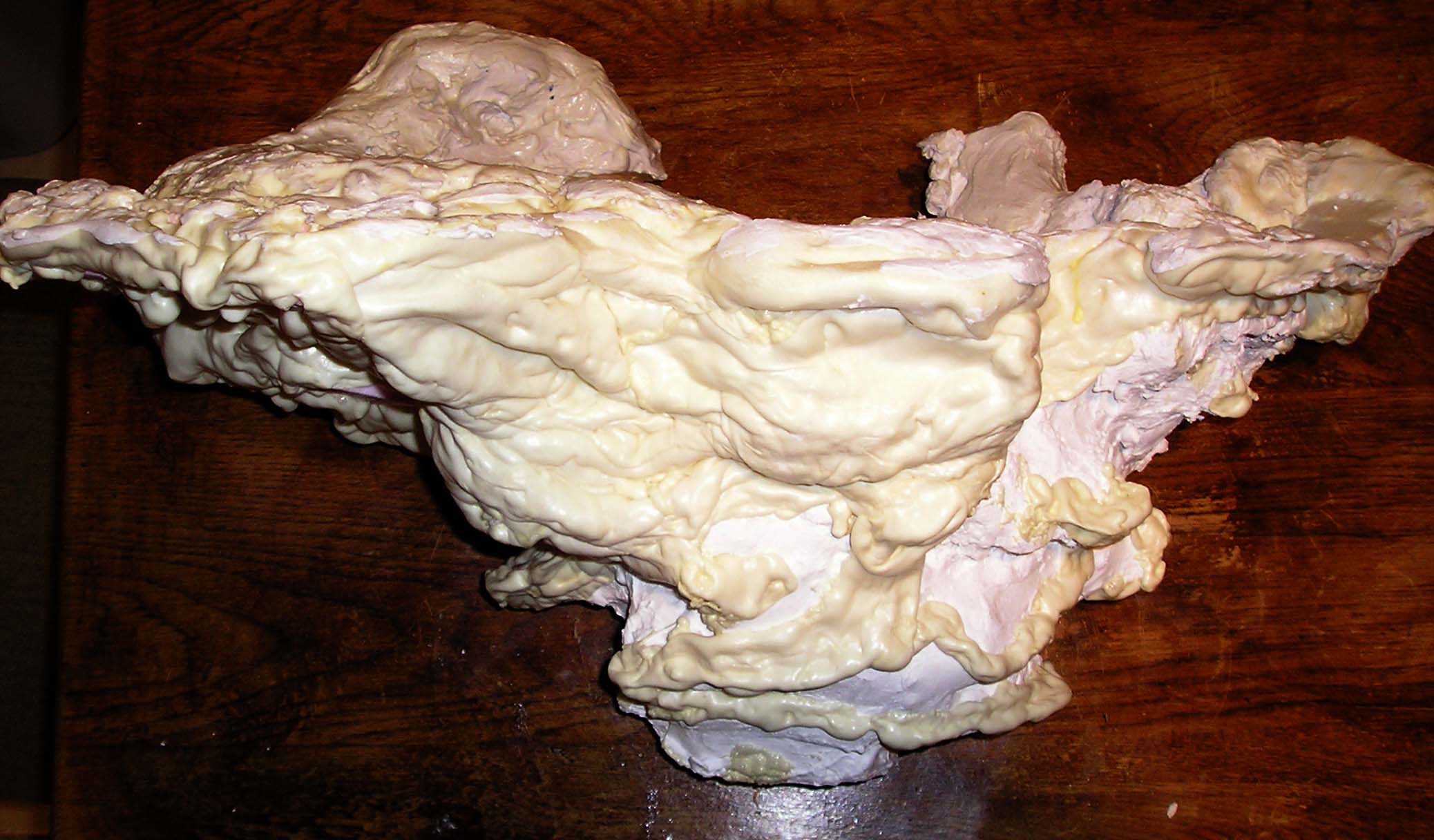
Basic styrafoam and plaster of paris form. This rock is 23 inches long and 11 inches wide. There will be 3 or 4 of these in the completed case as well as pebbles and eel grass (Horse mane, hand coloured)
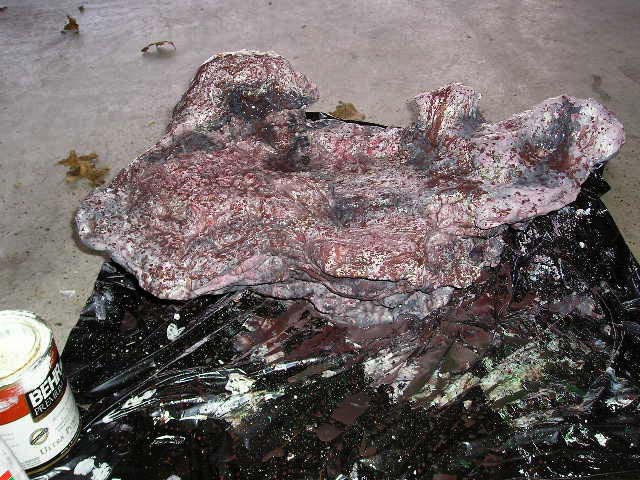
Each layer of paint is applied with a brush and then water added to create a watercolour effect, allowed to dry and then another coat applied
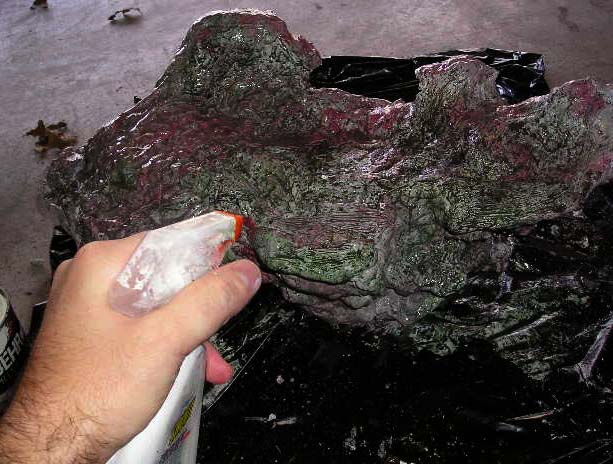
Each layer of paint is applied with a brush and then water added to create a watercolour effect, allowed to dry and then another coat applied
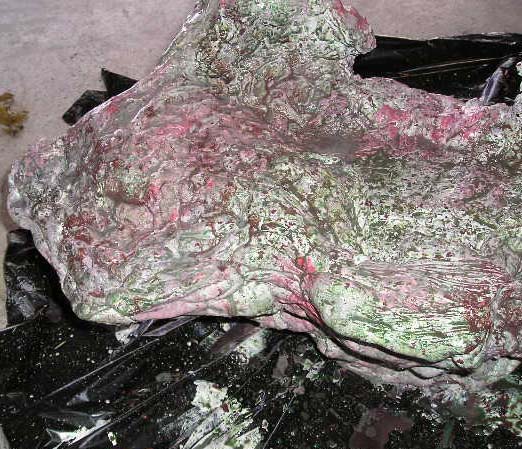
Each layer of paint is applied with a brush and then water added to create a watercolour effect, allowed to dry and then another coat applied
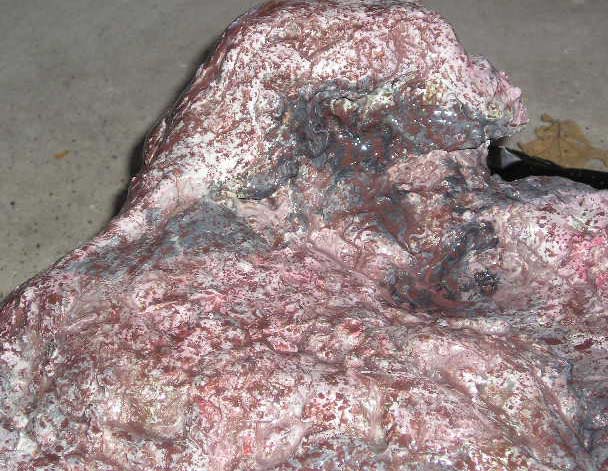
Remember there are approximately 25 layers of paint on this rock. The previous rock that took 8 hours was thrown away.
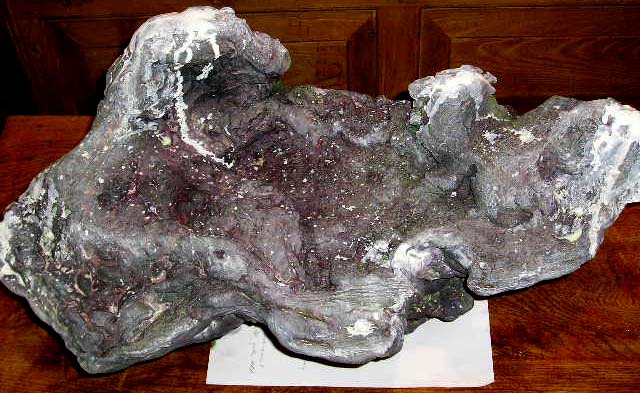
Nearly completed rock
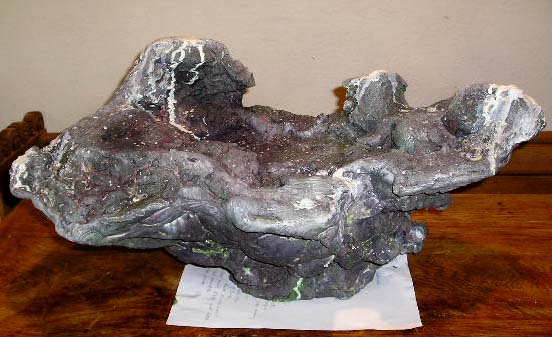
Nearly completed rock
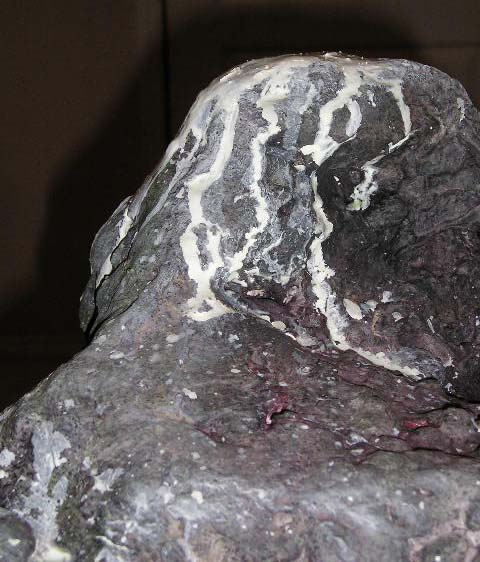
Atttention to detail and its just a rock.
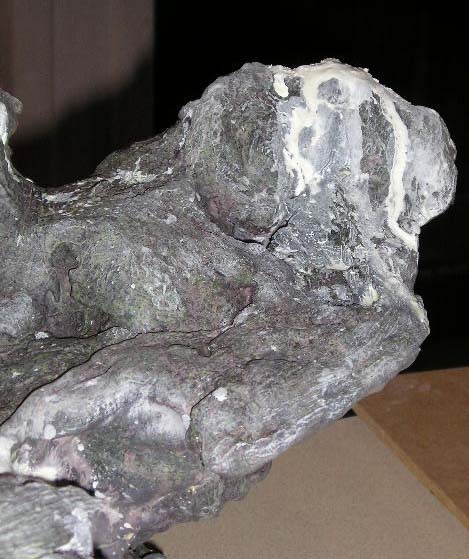
Atttention to detail and its just a rock.
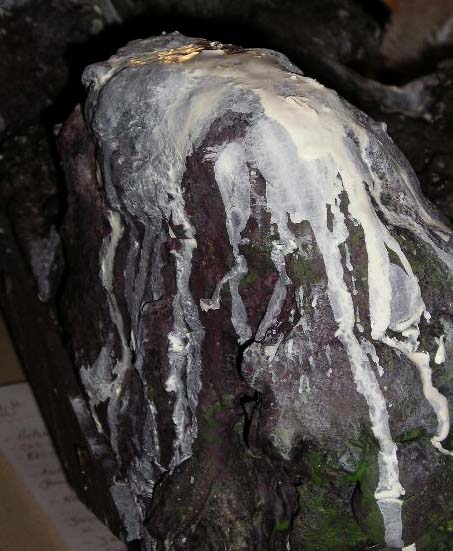
Atttention to detail and its just a rock. So some 8 hours later we have another rock. Just the one at the moment . If you look in the other case (Harlequins) that has 7 rocks created in the same way, not counting the hand made pebbles. This is why cases like this are both unique, superb and NOT for sale.
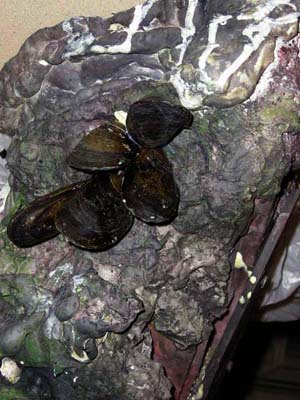
Atttention to detail and its just a rock. Mussel shells have been glued in place but the rock underneath is still dry. Varnish has yet to be applied.
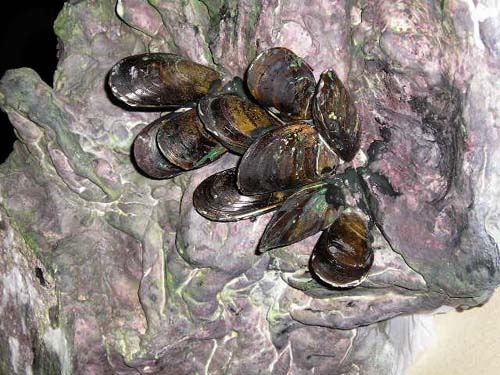
Atttention to detail and its just a rock. Mussel shells have been glued in place but the rock underneath is still dry. Varnish has yet to be applied.
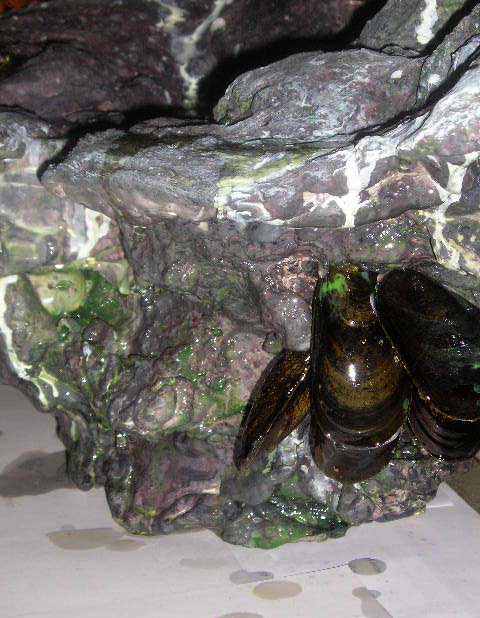
Atttention to detail and its just a rock. Mussel shells have been glued in place but the rock underneath. Varnish has now been applied.
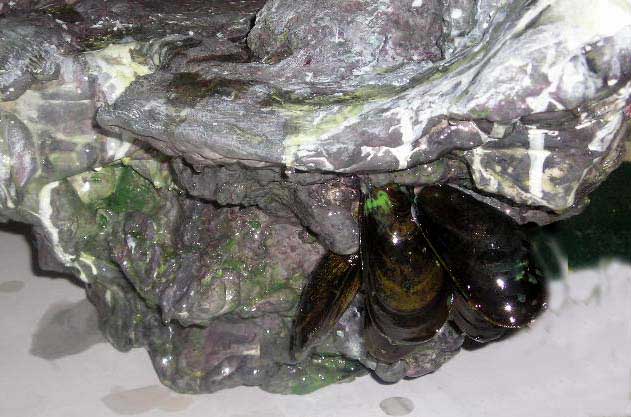
Atttention to detail and its just a rock. Mussel shells have been glued in place but the rock underneath . Varnish has now been applied.
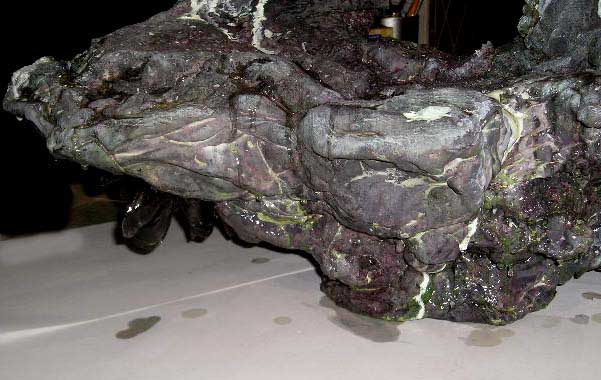
Atttention to detail and its just a rock. Mussel shells have been glued in place but the rock underneath . Varnish has been applied.
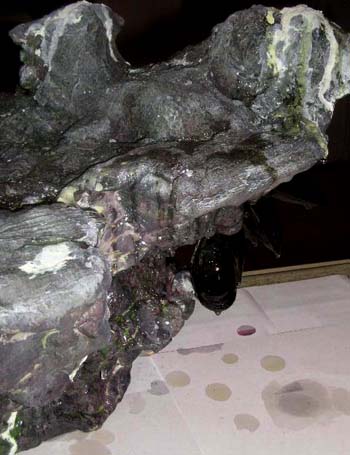
Atttention to detail and its just a rock. Mussel shells have been glued in place but the rock underneath . Varnish has been applied. This is just one rock, another 4 or 5 to go plus the pebbles. Ducks have yet to be mounted.
And now for the rocks
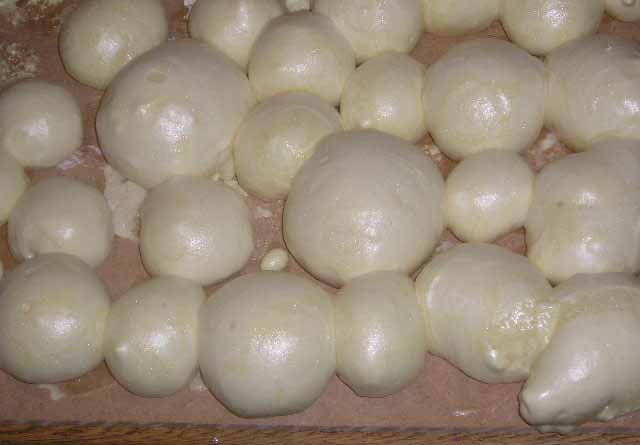
Atttention to detail and its the rocks. The rocks start out as just styrafoam blobs,
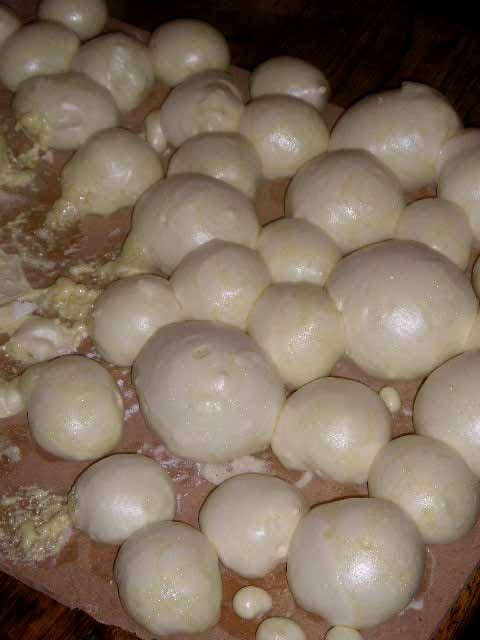
Atttention to detail and its the rocks. The rocks start out as just styrafoam blobs,
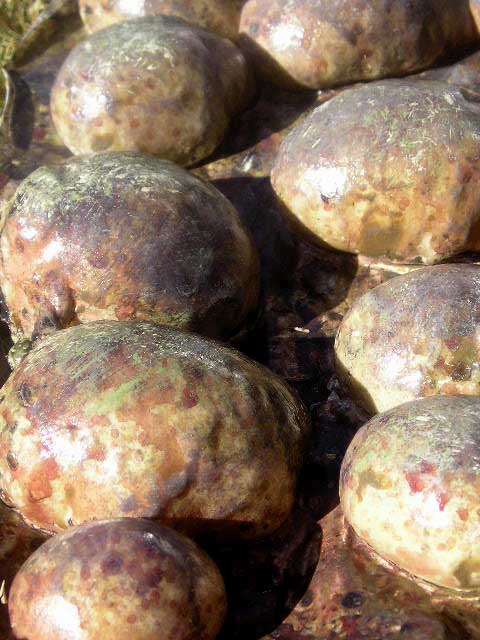
Atttention to detail and its the rocks. The rocks start out as just styrafoam blobs,5-7 coats of paint later and sprayed with acetone and you get the idea.
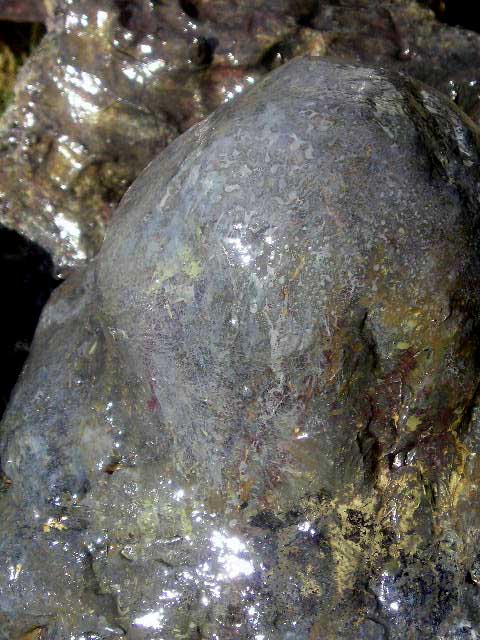
Atttention to detail and its the rocks. The rocks start out as just styrafoam blobs,
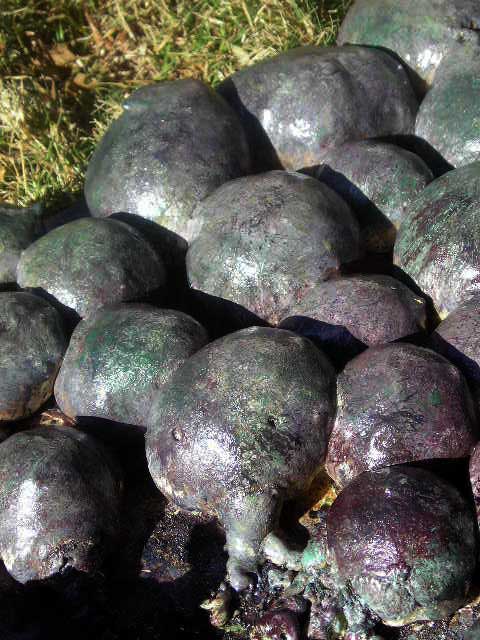
Atttention to detail and its the rocks. The rocks start out as just styrafoam blobs,
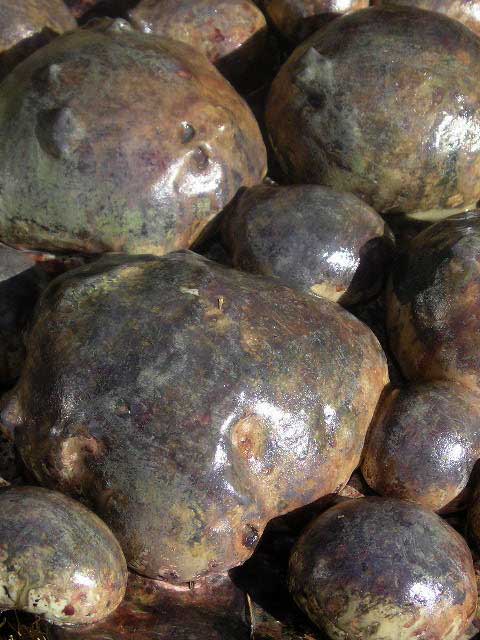
Atttention to detail and its the rocks. The rocks start out as just styrafoam blobs,
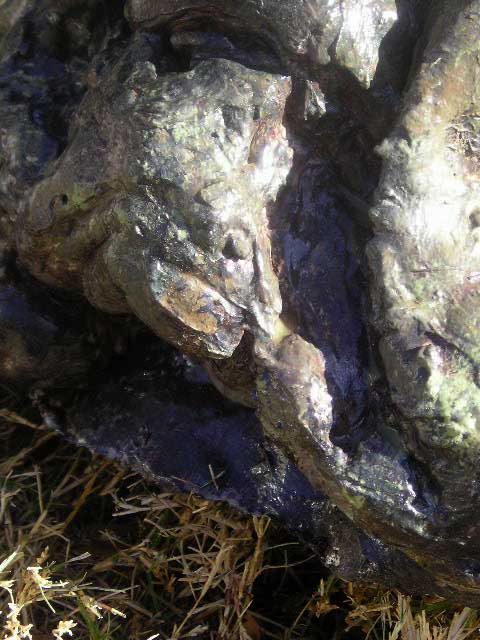
Atttention to detail and its the rocks. The rocks start out as just styrafoam blobs,
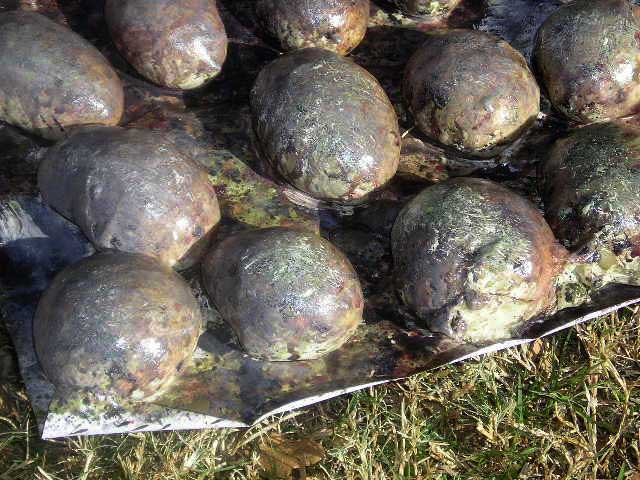
Atttention to detail and its the rocks. The rocks start out as just styrafoam blobs,
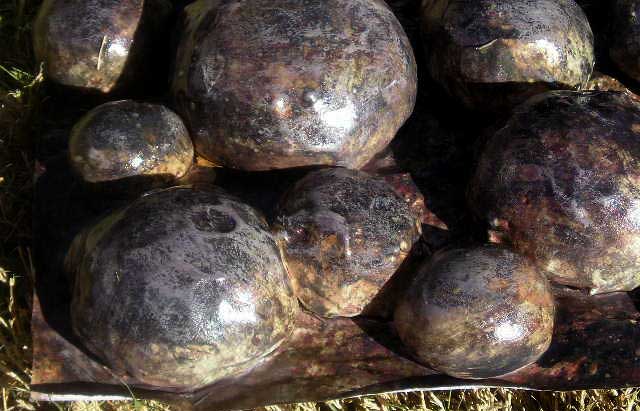
Atttention to detail and its the rocks. The rocks start out as just styrafoam blobs. We always create these with a paper backing as it allows you to peel them off easyily. Also the irony is that with all this work most of the detail will be lost amongst eel grass and blurred due to resin. That said others may not pay that much attention but we do.
Now for the casework
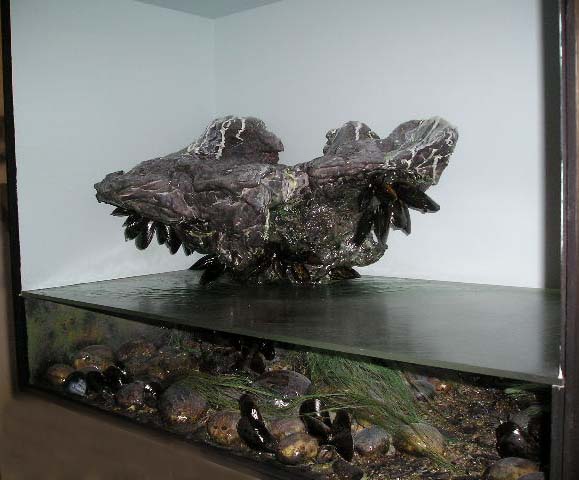
This partially completed case, well minus the ducks is good enough to show without them. Painstaking attention to detail and use of paint effects. There are no actual rocks, stones present, just replicas. For more information have a look at the page entitled North American Wildfowl. The art work is mine also. Inspiration for the case are TE Gunn and Hibbs. The ducks are drying currently and more resin work upon the water will be required. These case are not thrown together if you know what we mean.There will be a set of 6 completed, to inlcude, Eiders, Scoters, Goldeneye and Longtail Ducks. The Harlequins and Ringneck are completed. One of a kind series and never for sale.
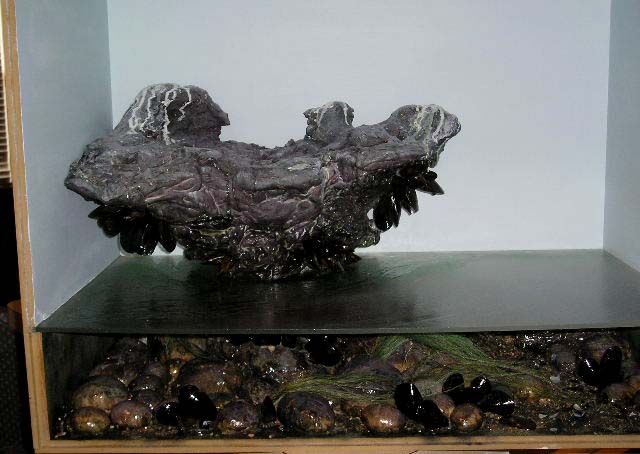
Completed case without the ducks clearly. Not sure of the number of hours but well over what it takes a normal taxidermist to complete the entire piece. More work required on the resin effect on the water, and shading of the front glass.
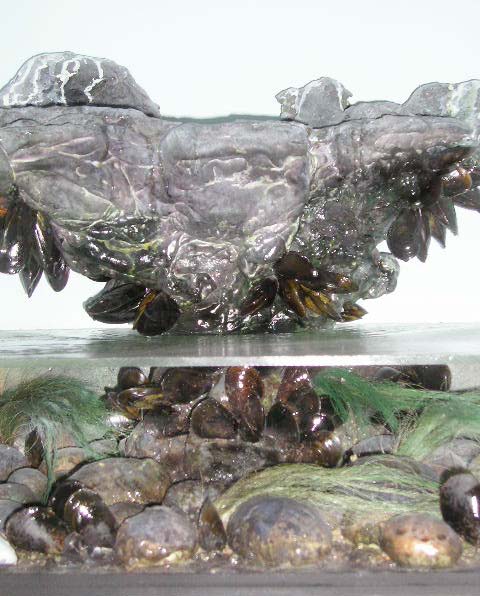
Atttention to detail is the best way forward. This image shows the transition between the rocks and mussels to join the above rock to the seabed in terms of perspective.
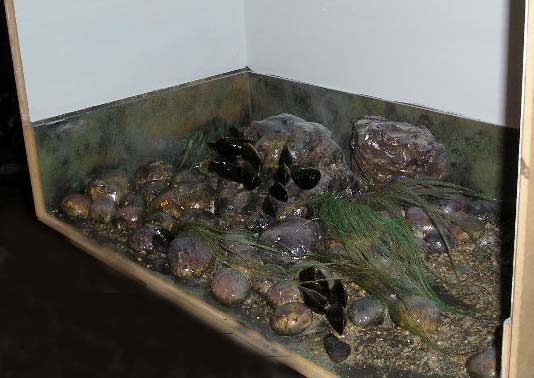
Atttention to detail is the best way forward.
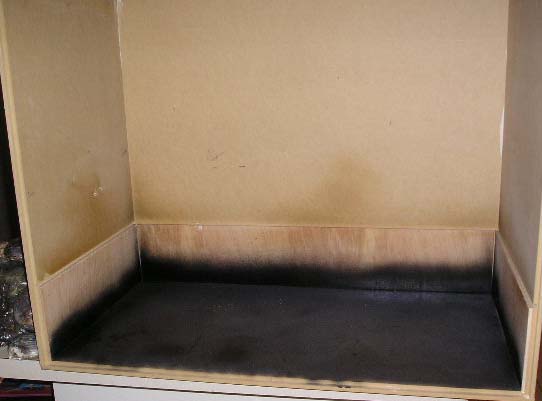
Atttention to detail is the best way forward.
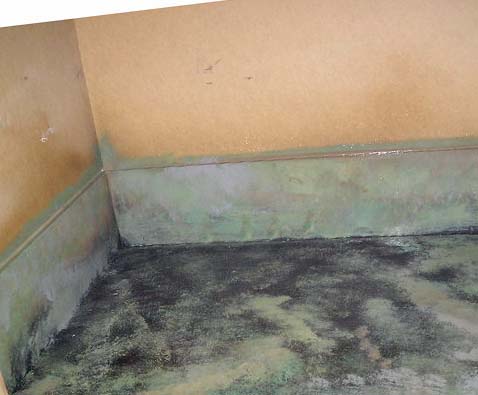
Atttention to detail is the best way forward.
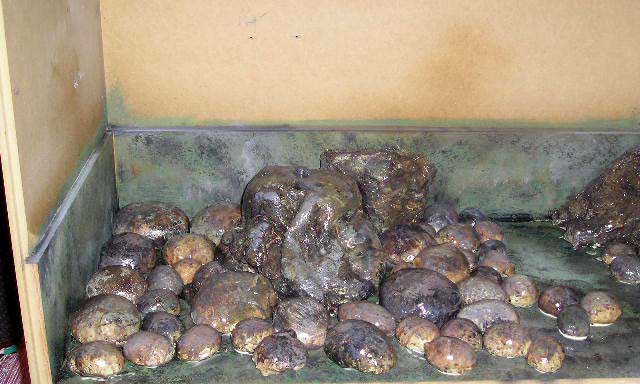
Atttention to detail is the best way forward.
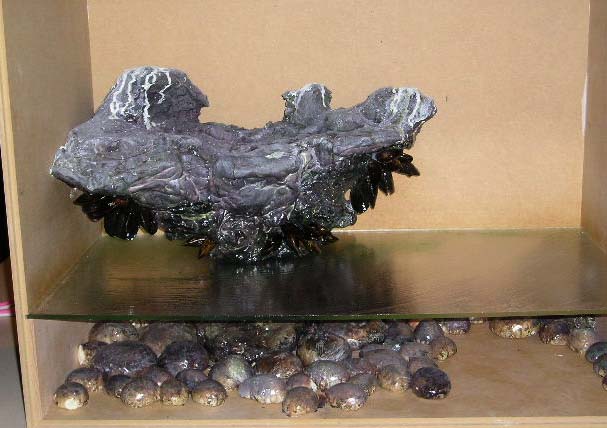
Atttention to detail is the best way forward. The case dimensions for the two ducks is 31 inches long, 16 inches deep and 25 inches high. The main rock is placed into the un-painted case to determine the best colours and ultimate position of the duck in the water below.
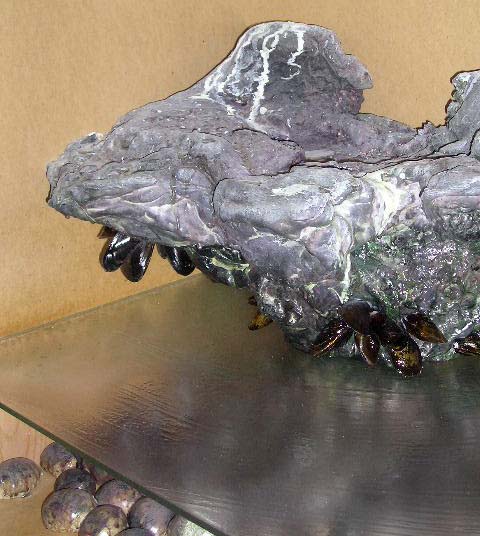
Atttention to detail is the best way forward.
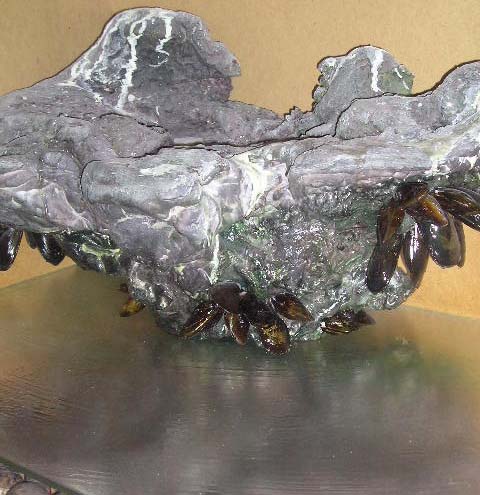
Atttention to detail is the best way forward.
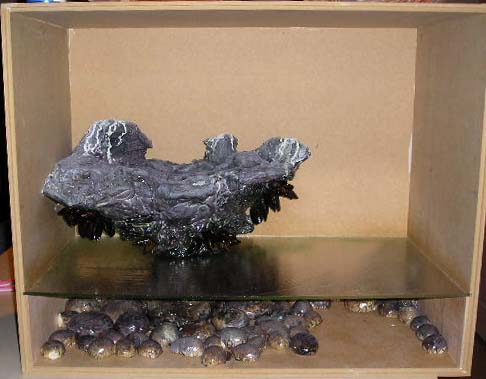
Atttention to detail is the best way forward. The imitation stones have just been randomly placed into the case and not fixed down as again their positions may change.
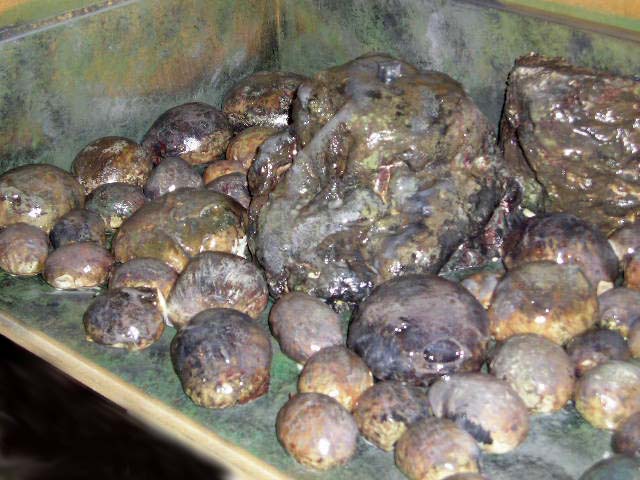
Atttention to detail is the best way forward.
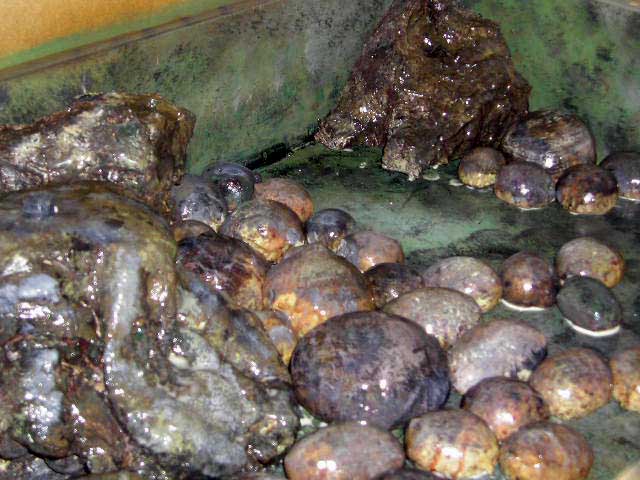
Atttention to detail is the best way forward.
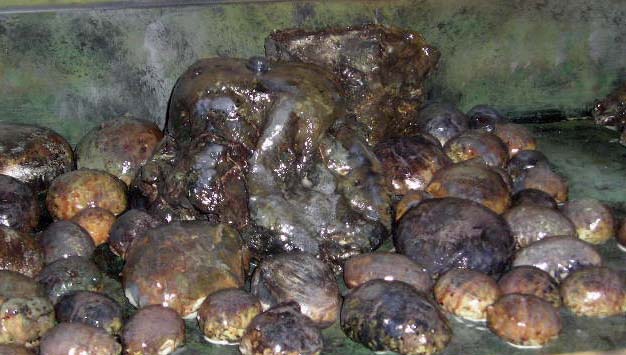
Atttention to detail is the best way forward.
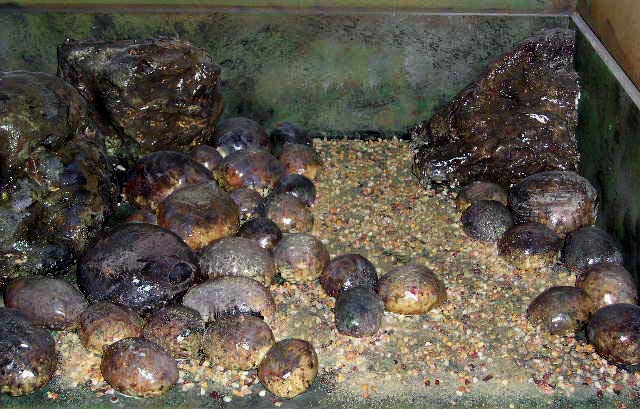
Atttention to detail is the best way forward.
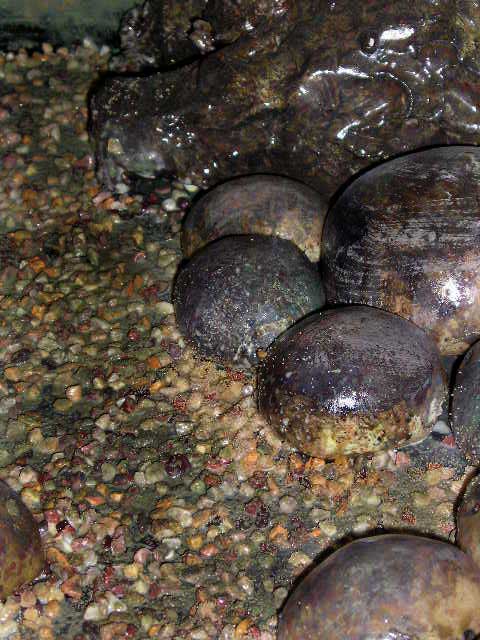
Atttention to detail is the best way forward.
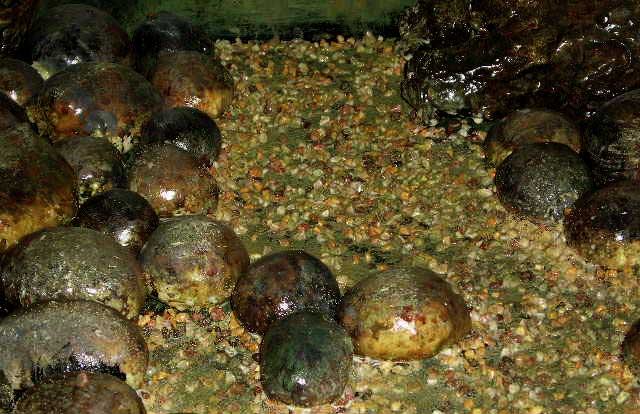
Atttention to detail is the best way forward.
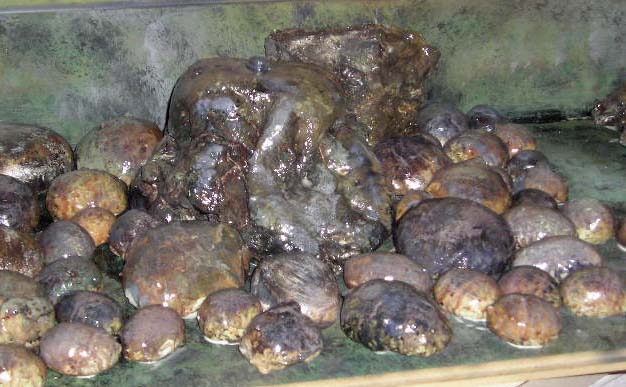
Atttention to detail is the best way forward.
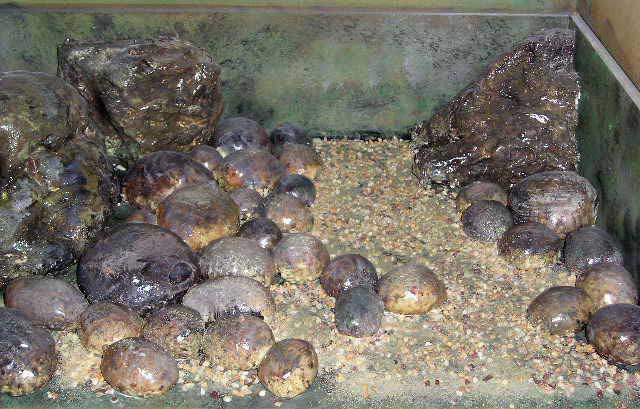
Atttention to detail is the best way forward.
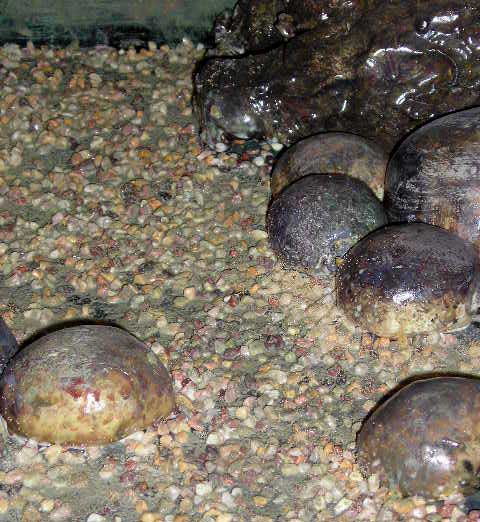
Atttention to detail is the best way forward.
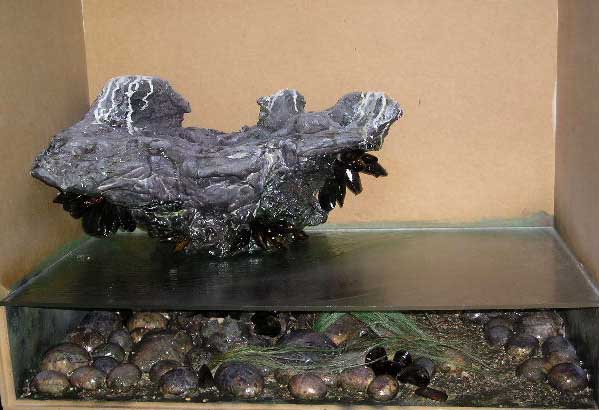
Atttention to detail is the best way forward.
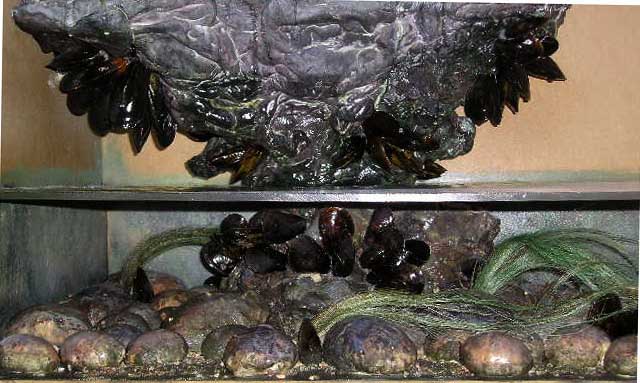
Atttention to detail is the best way forward.
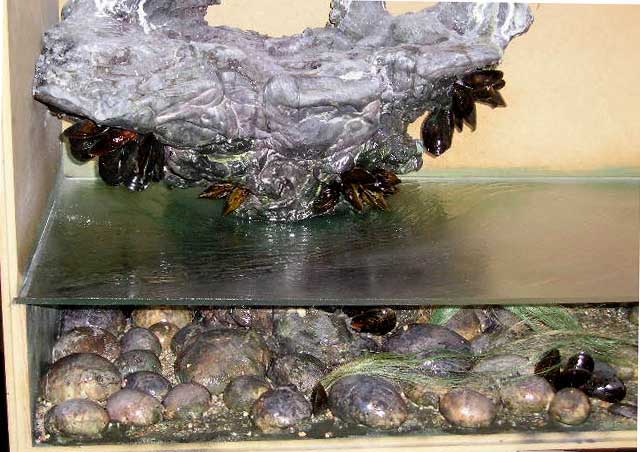
Atttention to detail is the best way forward.
ITEMS
WANTED. Please respond via this on-line form HERE
with a description of what you have for sale.
[HOMEPAGE]
Taxidermy Links.
Please double click on the Taxidermy link icon below.
Taxidermy
Links
|
























































